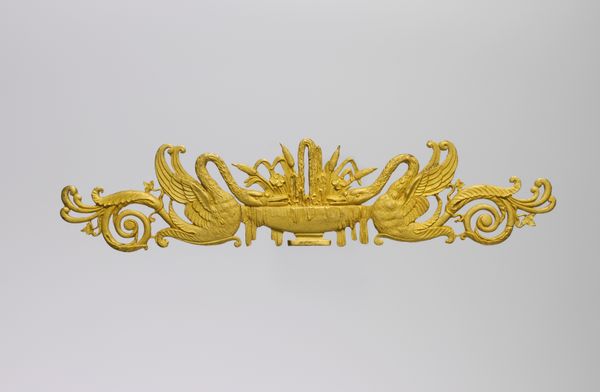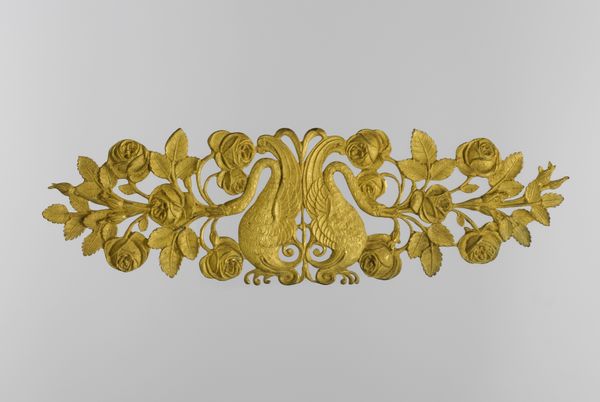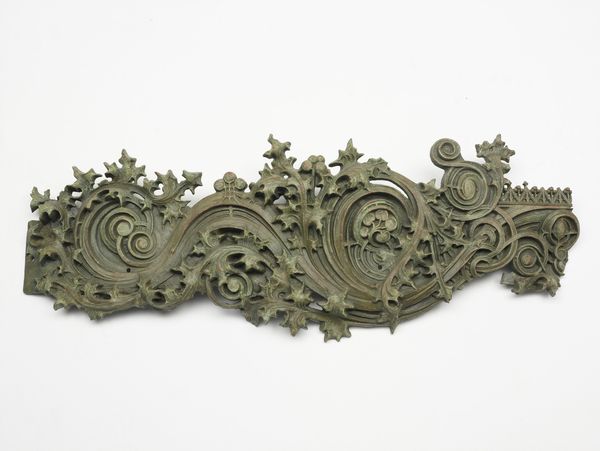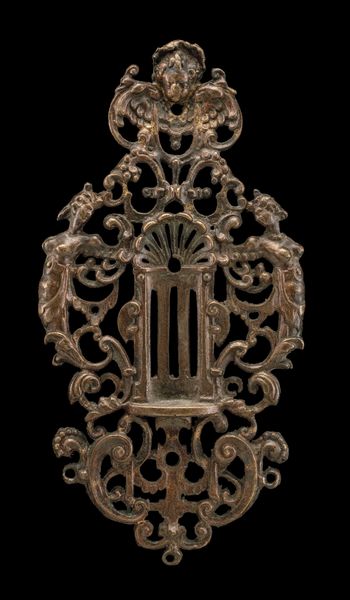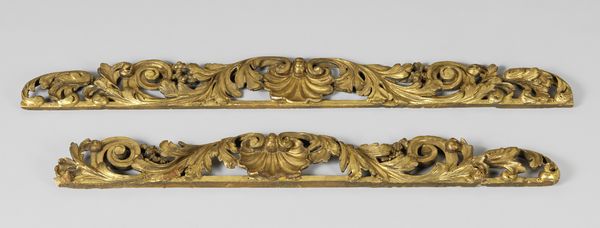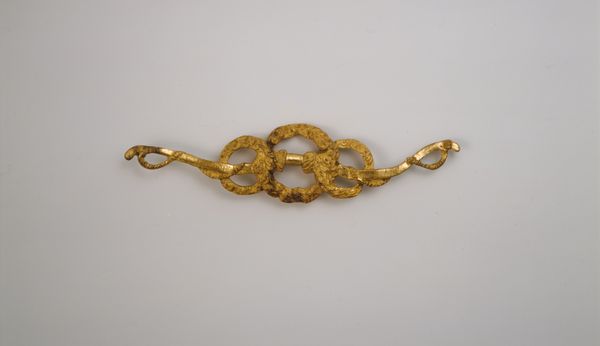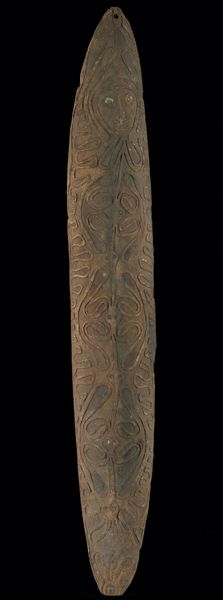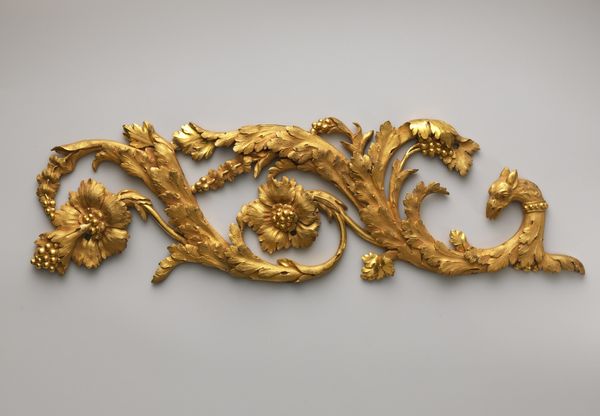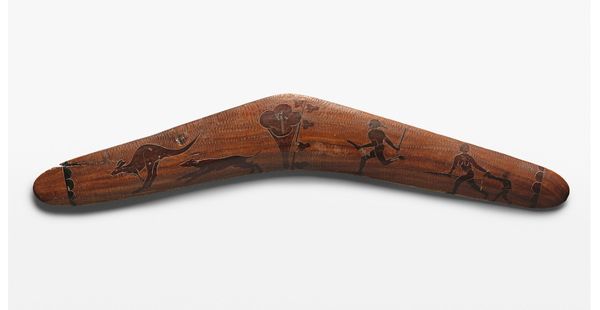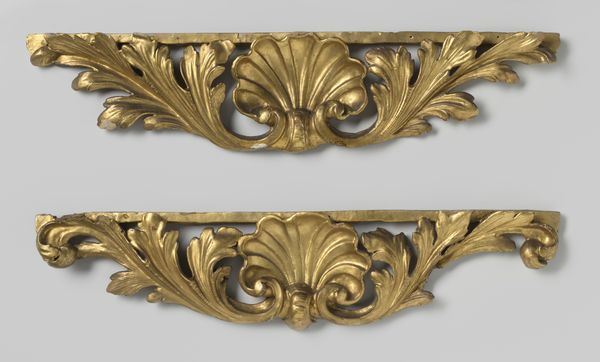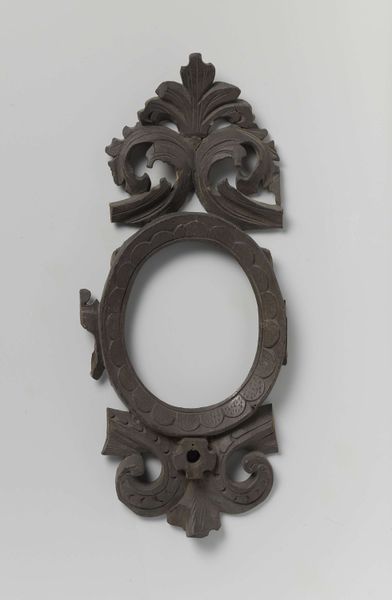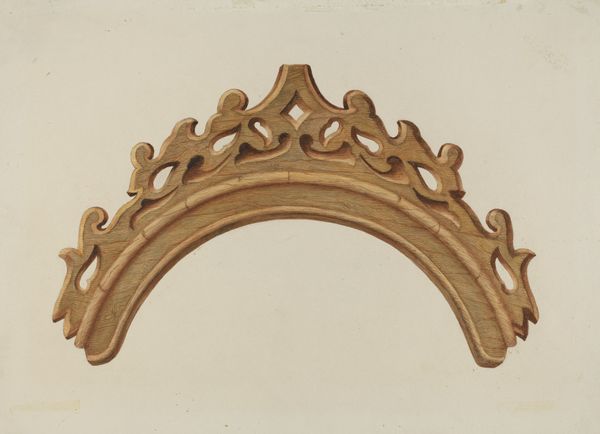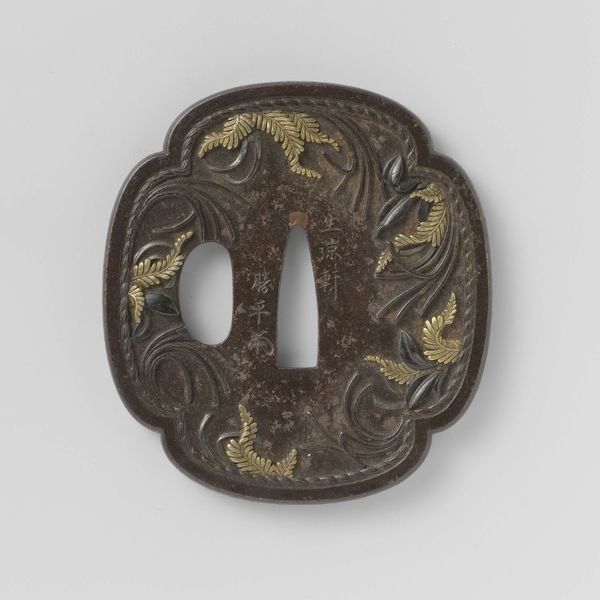
carving, sculpture, wood
#
portrait
#
carving
#
baroque
#
figuration
#
sculpture
#
wood
#
decorative-art
Dimensions: Overall (confirmed): 8 × 88 1/4 × 3 1/4 in. (20.3 × 224.2 × 8.3 cm)
Copyright: Public Domain
Curator: Look at this exquisite piece of Baroque decorative art—a crest rail from a settee, believed to be from the 17th or 18th century. Its delicate carving is quite stunning. Editor: Immediately I think…nap time for angels! Seriously, there’s a dreamy quality, almost as if the entire scene is unfolding in some sun-drenched, cloud-dappled paradise. Curator: Indeed. The sinuous curves and ornate foliage elements are characteristic of the Baroque aesthetic. Note how the sculptor employs a symmetrical composition, flanking a central cartouche with reclining cherubs on either side. This offers a rhythm that pleases the eye. Editor: Yes, and the central cartouche really does ground the whole thing, doesn’t it? It keeps all that Baroque extravagance from spiraling completely out of control, gives your eye somewhere to rest amid all those details. You can imagine the artist letting the wood dictate where each tendril winds. Curator: The figuration in this wood carving is masterful. Each cherub is rendered with lifelike detail, and the overall piece has a pronounced three-dimensionality that speaks to the skill of Fran\u00e7ois Roumier. Editor: Those cherubs… I wonder what they’re dreaming about. Is it music, maybe, or warm milk and honey? This thing probably sat above some duke’s rear. It feels irreverent, not religious—sort of domestic, weirdly. Curator: Interesting point. Though religious themes were common in Baroque art, decorative arts also frequently incorporated secular, pastoral imagery for aristocratic patrons. So while the iconography of angels is present, it could very well speak to the patron’s world view instead of any spiritual belief. Editor: That is an odd thought that this carving may reflect how the patron saw his "fluffy angel" kid(s) to be! So, seeing past its origins as a crest for an aristocratic settee, the form still feels modern because humor carries it through time! Curator: I concur. And if we understand that its design showcases Roumier's impeccable understanding of form and space, its enduring beauty becomes very apparent. Editor: To add on, there’s a vitality that defies its age, right? Some spark of joy—that must have been deliberately built into its design from the outset!
Comments
No comments
Be the first to comment and join the conversation on the ultimate creative platform.
